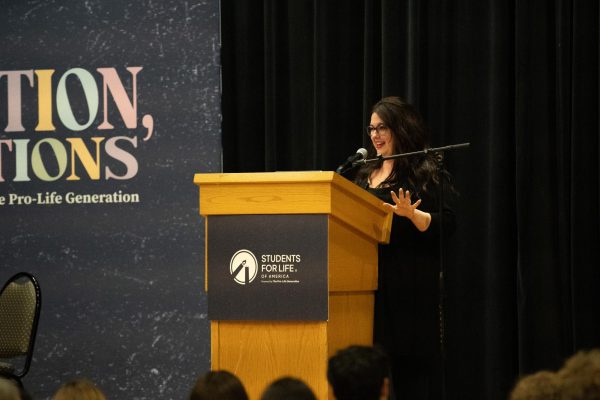Tybout: Success sometimes defined by cult status
April 11, 2010
Only about once per year does a film manage to attain “masterpiece” status. But… Only about once per year does a film manage to attain “masterpiece” status. But don’t fret, filmmakers. Your movie doesn’t have to be brilliant — or even good — to live forever as a cult classic.
It’s come to my attention, for instance, that the increasingly popular cult classic and supposed worst movie of all time, “Troll 2” (1990) is now the subject of a documentary: the aptly titled “Best Worst Movie.”
Having the opportunity — or misfortune — of seeing much of the movie it profiles, I can only applaud this pursuit. Not only will this be a great lesson in how not to make a film, but it will offer a much-needed examination in how films gain a following.
A bit of background: “Troll 2” is, believe it or not, not a sequel and in no way connected to the 1986 film “Troll.”
Rather, the filmmakers named it such because they wanted to piggyback off “Troll’s” box office success. In fact, there aren’t any trolls in “Troll 2.” Sounds good already, right?
Well, here’s the plot: In “Troll 2,” a chronically stupid family takes a trip out to the farming community of Nilbog, which, much to their dismay, doubles as a haven for goblins — or, as any half-blind audience can clearly see, a bunch of short people wearing masks.
Rather than just killing intruders, the goblins attempt, in a variety of convoluted ways, to force humans to ingest some sort of green goo, which will apparently make them more edible.
In a just world, the aforementioned description alone would damn this movie into obscurity.But in the idiosyncratic circle of B movie buffs, “Troll 2” has, like many of its contemporaries, become a veritable cult classic — which, in a way, makes sense.
Generally, three types of films morph into cult classics: movies with gratuitous sex and violence (“Pulp Fiction”), movies with bizarre premises (“Snakes on a Plane”) and movies so awful they actually trump many classics in longevity (“Plan 9 from Outer Space”).
Often, as is the case with “Troll 2,” the three categories are combined in one film.
But why do people latch onto movies with so little value? How does “Troll 2” worm its way into cinematic history whereas countless great movies are forgotten?
My first guess was simple enjoyability. When a film becomes sufficiently terrible, it becomes paradoxically more enjoyable than most classics. “Troll 2,” for instance, is unintentionally giggle inducing from beginning to end.
But camp enjoyment alone isn’t enough — the list of campy films that double as great guilty entertainment is almost as long as the list of all campy films ever made.
Rather, movies become cult classics because they are, in some bizarre way, original.
“Troll 2,” for instance, in spite of its near-infinite list of flaws, has a premise you would have to be on all kinds of narcotics to dream up. Because the film is too incompetent even to pull off clichés, it comes off as uniquely terrible — a sort of revolution in camp.
Even the acting is conspicuously awful, rather than merely poor.
Better cult movies, of course, broke ground in different, more commendable ways. “Pulp Fiction” (1994) for instance, turned the daily trials of gangsters in Los Angeles’ underbelly into a postmodern joyride, revolving in a circle of death and banter. “This Is Spinal Tap” (1984) seized the aesthetic of the documentary for its own mischievous ends, paving the way for everything from “Borat” to “The Office.”
It sometimes takes a devout — and bizarre — niche of people to appreciate a film’s originality truly, in whatever form it may manifest itself.
But the great thing about movies is that they’ll always find an audience — no matter how strange or, in some cases, terrible they might be.







